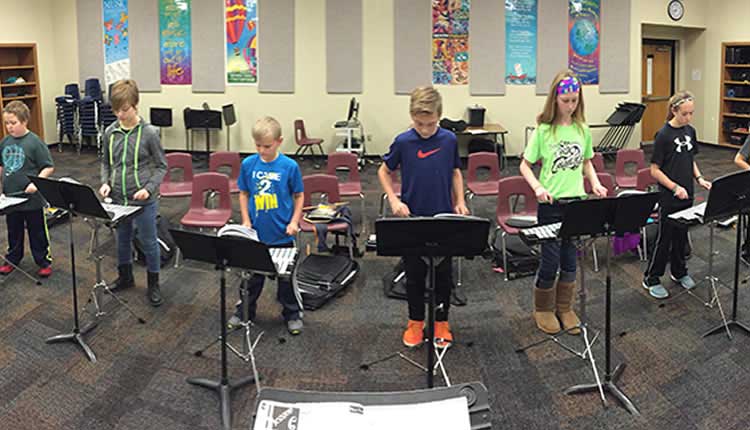Many bands run into the same problem at the start of band camp when it comes to the front ensemble: My best mallet players graduated last year, and the junior high “percussionists” are all headed for the drumline. I’ve got my principal oboist, two bassoonists, my lead tenor sax that can’t march this year, and three freshmen that can’t walk and chew gum.
What am I supposed to do? How do I make percussionists out of all of these horn players? Where am I going to get mallet players to play all of this stuff my arranger has written? Who should be playing what? We’ve got mallet instruments, tympani, and a whole host of accessory percussion equipment. What kid goes where? Most important: our parent premier night is two weeks away, and what’s Mom going to do if “Johnny” has been coming to camp for two weeks and can’t play a lick at our first performance?
There are some basic survival tactics for the “non-pitist” or band director to get your front ensemble rolling. In a very short time, you can teach a basic technique, build a warm-up book, and establish a procedure for assigning parts and learning music.
Step One: Getting Technique Started
Everyone can start on a mallet instrument for this. The basics of good technique can be established on just about any instrument, and you can help take the mystery out of mallet playing by putting everyone on a mallet keyboard. You can put two players on a marimba, as long as they’ve both got “elbow room”.
The three things I tell all of my beginning students to remember when they are playing are:
- Relaxed fingers: I always want to see my beginning players have all of their fingers GENTLY wrapped around the shaft of the mallet. Too tight and it restricts motion; too lose and you can’t control speed, dynamic, or direction.
- Wave goodbye: I always tell my students to imagine waving goodbye with their mallet (as opposed to shaking hands). This ensures a straight up and down motion to the key, which leads to better accuracy. You don’t know how many note corrections I’ve made over the years by simply turning a student’s hand slightly “flatter” to the instrument.
- Bounce the basketball: Beginning students will often have an approach that will push a mallet into the instrument, muting the key and creating a bit of a “deadstroke”. I encourage students to “bounce the ball” – this encourages them to focus not only on the down stroke, but also the upstroke, promoting a more balanced approach to playing and a non-muted sounding key.
By emphasizing these three basic elements during daily practice sessions, I’ve found that my horn players start looking like percussionists in a matter of days!
Next up: Building the basic warm-up book and taking the fear out of mallet playing!


